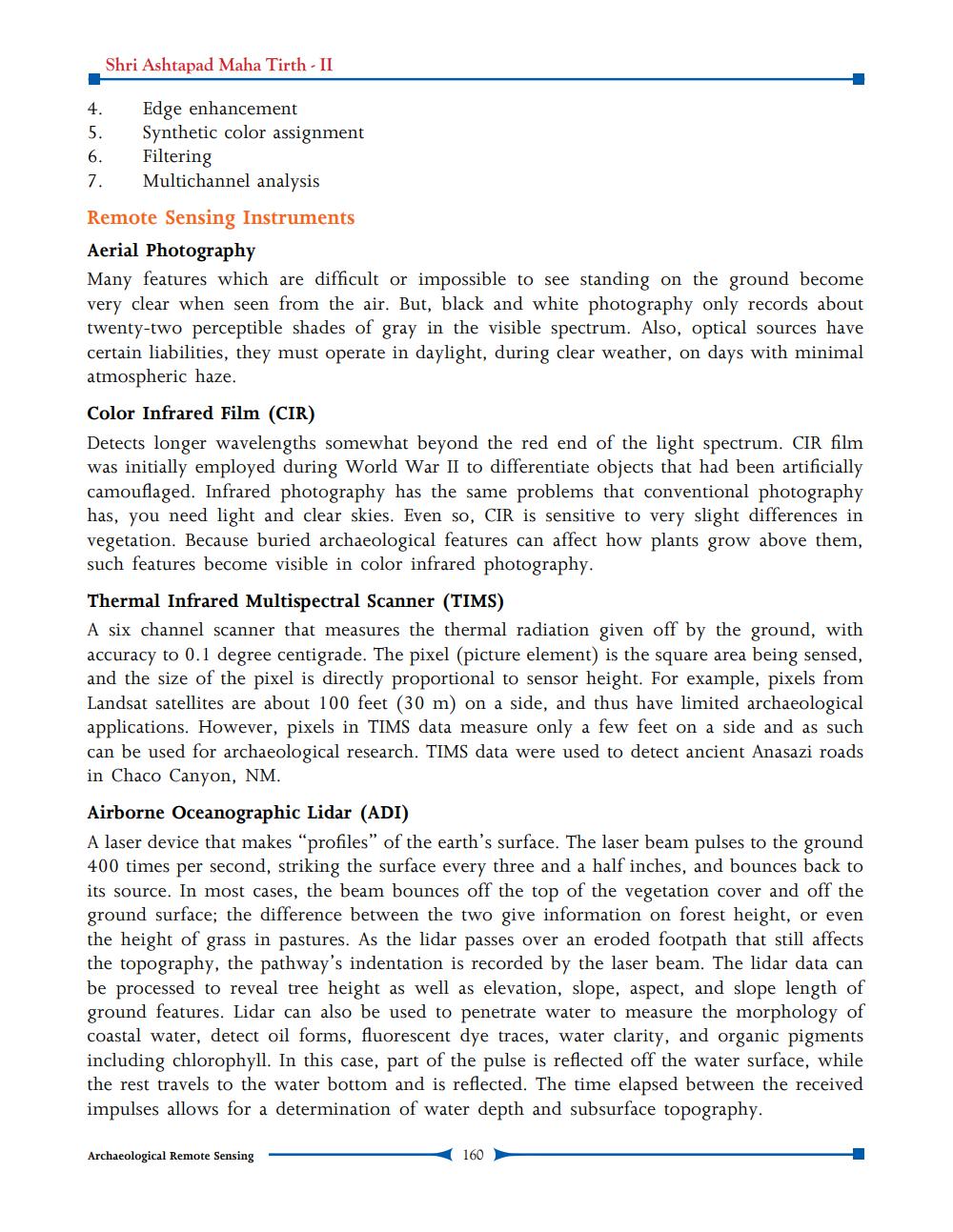________________
Shri Ashtapad Maha Tirth - II
Edge enhancement Synthetic color assignment
Filtering 7.
Multichannel analysis Remote Sensing Instruments Aerial Photography Many features which are difficult or impossible to see standing on the ground become very clear when seen from the air. But, black and white photography only records about twenty-two perceptible shades of gray in the visible spectrum. Also, optical sources have certain liabilities, they must operate in daylight, during clear weather, on days with minimal atmospheric haze. Color Infrared Film (CIR) Detects longer wavelengths somewhat beyond the red end of the light spectrum. CIR film was initially employed during World War II to differentiate objects that had been artificially camouflaged. Infrared photography has the same problems that conventional photography has, you need light and clear skies. Even so, CIR is sensitive to very slight differences in vegetation. Because buried archaeological features can affect how plants grow above them, such features become visible in color infrared photography. Thermal Infrared Multispectral Scanner (TIMS) A six channel scanner that measures the thermal radiation given off by the ground, with accuracy to 0.1 degree centigrade. The pixel (picture element) is the square area being sensed, and the size of the pixel is directly proportional to sensor height. For example, pixels from Landsat satellites are about 100 feet (30 m) on a side, and thus have limited archaeological applications. However, pixels in TIMS data measure only a few feet on a side and as such can be used for archaeological research. TIMS data were used to detect ancient Anasazi roads in Chaco Canyon, NM. Airborne Oceanographic Lidar (ADI) A laser device that makes "profiles of the earth's surface. The laser beam pulses to the ground 400 times per second, striking the surface every three and a half inches, and bounces back to its source. In most cases, the beam bounces off the top of the vegetation cover and off the ground surface; the difference between the two give information on forest height, or even the height of grass in pastures. As the lidar passes over an eroded footpath that still affects the topography, the pathway's indentation is recorded by the laser beam. The lidar data can be processed to reveal tree height as well as elevation, slope, aspect, and slope length of ground features. Lidar can also be used to penetrate water to measure the morphology of coastal water, detect oil forms, fluorescent dye traces, water clarity, and organic pigments including chlorophyll. In this case, part of the pulse is reflected off the water surface, while the rest travels to the water bottom and is reflected. The time elapsed between the received impulses allows for a determination of water depth and subsurface topography.
Archaeological Remote Sensing
(160




